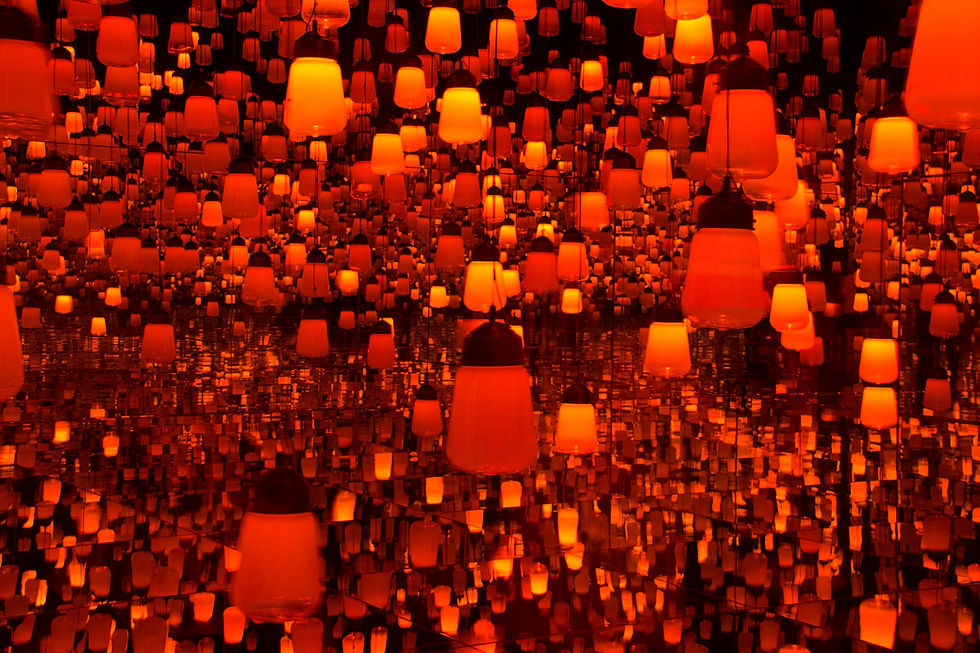Record-Breaking Wonders of Nature
- Magnolia

- Jul 8, 2021
- 3 min read
Updated: Jul 14, 2021
There are plenty of nature's masterpieces of indescribable beauty, but the natural wonders on this list have also broken world records because of their depth, length, width, or height. Here are five record-breaking wonders of the natural world that will make your jaw literally drop.
1. Angel Falls - The Highest Waterfall
Angel Fall is a majestic waterfall located among the jungle of the Canaima National Park in Venezuela. It is the world's highest waterfall that falls from the height of 979 meters over the edge of the Auyantepui Table Mountain. Here's a comparison to give you an idea of how majestic this waterfall is: it is 150 meters taller than the tallest building in the world - Burk Khalifa. It is so high that some of its water can evaporate and turn into a fog before it lands. The fog can be seen from several kilometers away.

Location: Canaima National Park, Bolívar State, Venezuela, South America.
How to get there? It is impossible to reach Angel Falls by car or bus. So, you have to fly or take a boat upriver to the waterfall.
The perfect starting point: Canaima town (travelers have to fly to the town)
The cheapest and easiest way to see Angel Falls is to purchase a package tour.
2. Lake Baikal - The Oldest, Largest, and Deepest
Lake Baikal has broken several world records: it's the deepest (1642 meters), oldest (25-30 million years), and the largest freshwater lake holding almost 23% of the world's freshwater. For comparison, the lake is as deep as five Eiffel Towers if they were stacked on top of each other. Lake's surface area is bigger than many countries in the world. For instance, it is bigger than Belgium or Israel. The lake, also known as the "Blue Pearl" of Siberia, is surrounded by spectacular mountain ranges covered with dense forest. The beauty of this natural scenery is guaranteed to make your jaw drop.

Location: Eastern Siberia, Russia
The perfect starting point for the Baikal trip: Irkutsk. The lake is a 1-hour drive away.
Closest village: Listvyanka
Recommended transportation: long-distance train
3. Frying Pan Lake - The Largest Hot Spring
Frying Pan Lake is the largest hot spring on Earth. The Lake has a temperature of 50-60 degrees Celsius all year round. This smoking hot lake covers 38000 square meters of the giant volcanic crater. The water in the lake is hot and acidic ( pH 3.5). So, you can't enjoy swimming in here (it can cause second-degree burns) or make a cup of tea using its water (pH of drinking water: 6.5 to 8.5). The magma at the bottom of the lake releases steam and various gases, so the water in the lake only appears to be boiling. But you can still marvel at the thick clouds of constant steam and imagine that something giant is boiling in it. The surrounding area of the lake also possesses incredible beauty. Many visitors say that it is the most beautiful place in New Zealand.

Location: Waimangu Volcanic Rift Valley in Rotorua, New Zealand.
4. Son Doong - The Largest Cave
Son Doong is the largest cave on the planet, with a length of 9 kilometers and a depth of 150 meters. The cave is located in Phong Nha-Ke Bang National Park in Quảng Bình Province of Vietnam. Son Doong is not only famous for its enormous size but also its unique ecosystem. As unbelievable as it may sound, the cave has its own weather system and even its own clouds! Also, this mysterious underground world has a waterfall, an ancient lake, rivers, and even primeval rainforest untouched by humans. The jungle inside the cave is so beautiful that experts have named it "the Garden of Eden". Son Doong cave offers us the chance to travel back in time and experience life on Earth as it was millions of years ago.

Location: Phong Nha-Kẻ Bàng National Park, Bố Trạch District, Quảng Bình Province, Vietnam.
How to get there: join Son Doong Expedition operated by Oxalis (check out their website)
5. Kilauea Volcano - The Most Active Volcano
Kilauea is the most active volcanic mass on the planet. Located on the Big Island of Hawaii, it is the main highlight of Hawaii Volcanoes National Park. The eruptions of this volcano are usually nonexplosive with slow-moving lava that flows into a lava lake in the Halema'uma'u crater. The Volcanoes National Park is open 24 hours, so visitors can marvel at the red glow from the lava at night.

Entrance fee: from $15 - $30






Comments